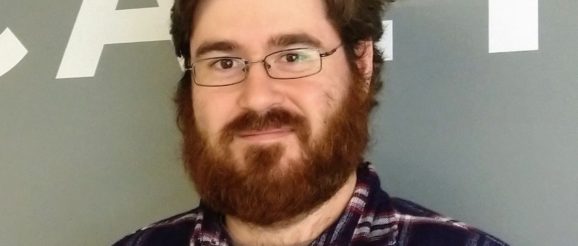Hiring for Innovation: Scalyr’s Approach to Tech Hiring

Hiring for Innovation: Scalyr’s Approach to Tech Hiring
Machine Learning (ML) is one of the biggest tech trends penetrating the market today. It’s often used to help companies sift through massive data sets in order to help inform product or business decisions. This can be extremely time-consuming.
Enter: Scalyr. The small company taking on big data. Now with about 50 employees, Scalyr has developed a cloud-based product that can sort through large amounts of data at a fraction of the speed of its competitors. One of their big differentiators, however, is doing it all without the use of ML.
Scalyr’s technology combines traditional operations tools like server monitoring, application metrics, log analysis and error tracking–all monitoring massive data sets–and combines them into one lightning-fast solution. They’re especially popular among DevOps engineers, whose sole focus is on the health of the company’s data infrastructure.
The bar for tech talent is exceptionally high when you’re scaling a product built for engineers. We caught up with Michael Powell, the first recruiting hire and Lead Recruiter at Scalyr, to get some insight into their approach to hiring top tech talent.
What was your technical recruiting process like before HackerRank?
Michael: Before we started using HackerRank, our approach was a bit lighter. After the typical resume review, we’d send qualified candidates a high-level algorithmic question. This was great to get a sense of their depth of thinking, but it didn’t account for their technical skills. Often we’d get candidates who did well on this question and would advance them to the on-site, where we would find that they couldn’t code. Needless to say, it wasn’t an efficient way to screen.
You can imagine how much time was wasted interviewing these candidates. We’re a small, growing startup, so our engineering team’s time is extremely valuable. We needed to shift from assessing theoretical concepts to tangible, proven skills.
“We needed to shift from assessing theoretical concepts to tangible, proven skills.”
How did you land on HackerRank?
Michael: We recently brought on Bill Farner as the new Head of Engineering and one of his first initiatives was to implement HackerRank in our recruiting process. He had success using it at previous companies so it was something he was passionate about putting in place.
How has this new initiative been received by the rest of the team?
Michael: We’re about 6 months into it and HackerRank has now become a new company standard. 90% of our engineering teams are using it to bring in new candidates. It’s helped us scale up our engineering organization tremendously–we’ve now doubled in size.
One of our niche teams, the API team, is actually splitting from the backend group and becoming a standalone team. It’s just two women right now, but we expect them to start building out their own recruiting process and designing their own HackerRank challenges for screening.
“We’re about 6 months into it and HackerRank has now become a new company standard. It helped us scale up our engineering organization tremendously–we’ve now doubled in size.”
How has tech hiring at Scalyr changed?
Michael: We’re able to focus on interviewing some great candidates that we’d typically pass on. Some of our managers are reluctant to interview candidates who may not have strong resumes or the right background. But assessing candidates purely on technical skills upfront has changed that.
CodeScreen gives us added value in our screening process. We can qualify more candidates and much faster than if we began with the phone screen because we already know they have the technical skills we need.
HackerRank’s integration into our ATS system Greenhouse also saves us time by having everything all in one place; that’s one less workflow to worry about. After reviewing resumes we can send our code challenges directly to qualified candidates all within the same tool.
What do you focus on when you’re looking for technical talent?
Michael: We’re a young company, so every technical hire is helping us shape the foundation of our product. With this in mind, we actually try to hire for potential. Yes, it’s important to narrow down candidates with the right skills–candidates who can code. But looking at candidates holistically has really helped us find some gems.
We want talent that is equipped to hit the ground running once they come onboard. But that doesn’t necessarily mean they need to have experience building successful products. We look for candidates with potential. People who are trainable. On top of screening for the basics, i.e. can they code, we look for holistic qualities. During a pair programming session, where candidates tackle more complex challenges, we get a better sense of their problem-solving abilities and collaborative nature. They may not be successful but are they open to feedback? Are they able to take hints that the engineering manager is dropping and come to a sound conclusion about the challenge? We value candidates who are open-minded and motivated to find a solution, even if it means arriving there differently than they originally envisioned.
How does this impact the challenges you put together?
Michael: We like to give our candidates challenges that are reflective of the work they’ll be doing here at Scalyr. Not necessarily problems we’re facing now, but have faced in the past. Getting a sense of how they’d approach these problems helps us understand how they’d fit in. Do they have similar methodologies? Can they propose new and creative approaches?
If we’re conducting a technical interview we like to use CodePair for a pair programming session. Unlike a whiteboard interview, this allows our candidates to code in a natural environment, wherever they are, in the language they prefer.
Interested in learning more? Check out the full webinar for more on how Scalyr finds top tech talent:
